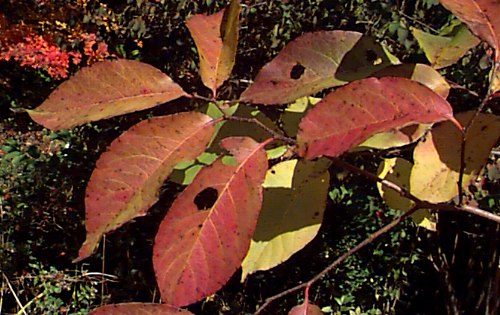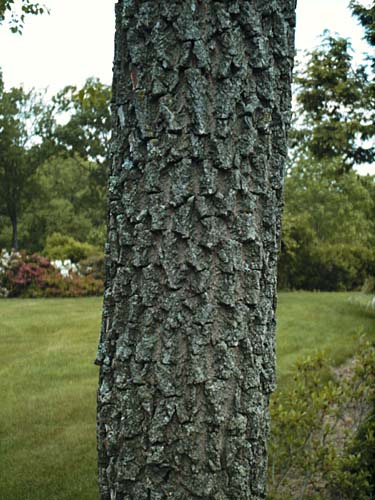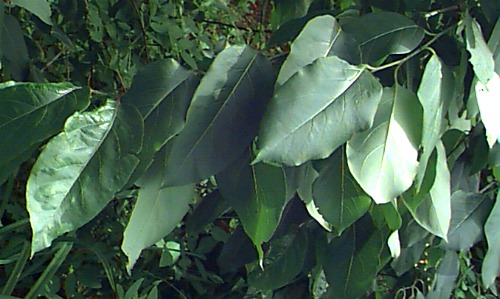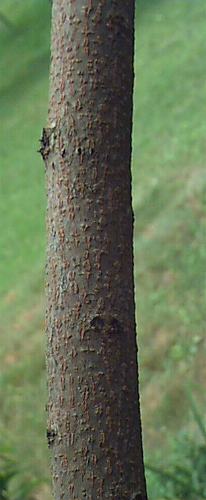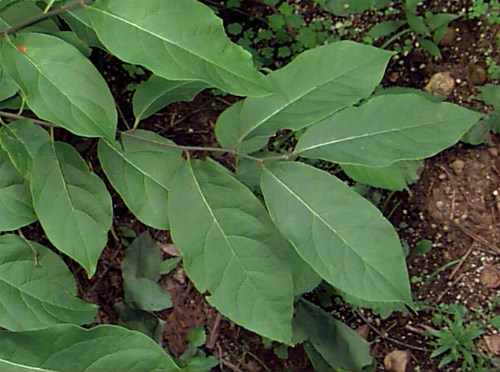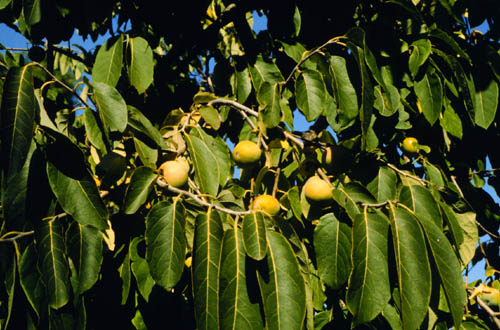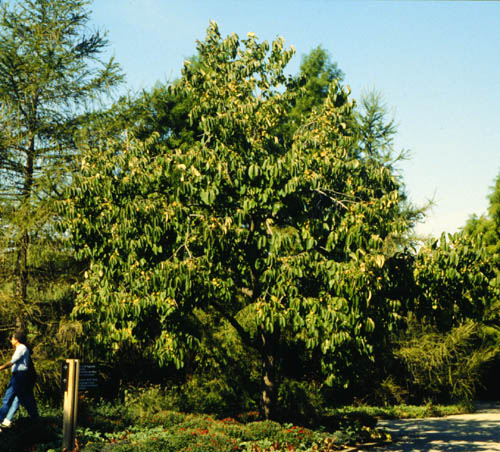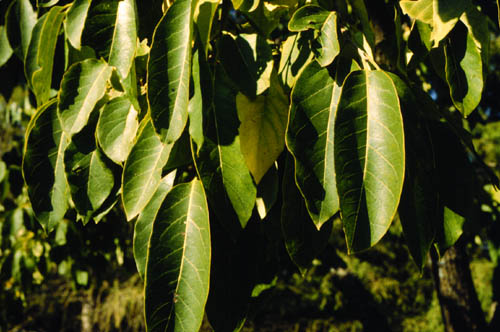Diospyros virginiana
Common Persimmon
Ebenaceae
ExpandHabitat
- native to eastern North America
- hardy to zone 4
Habit and Form
- a deciduous tree
- 35' to 40' tall
- pyramidal in youth becoming open with age
- medium coarse texture
- fast growth rate
Summer Foliage
- alternate leaf arrangement
- simple, deciduous leaves
- 2" to 6" long
- ovate leaf shape
- dark, glossy green leaf color
- pubescent, lighter underside
Autumn Foliage
- yellow to red fall color
- variable
Flowers
- dioecious
- blooms early spring
- not ornamentally important
Fruit
- only on female trees
- red orange multiple fruit
- 1" to 2" long
- matures in September
- edible
- attracts wildlife
Bark
- one of the most distinctive features of the species
- mature bark develops a deep, blocky pattern
- dark gray or brown; almost black at times
- looks much like alligator hide
- similar in appearance to old Cornus florida bark, but more dramatic
Culture
- prefers moist, well-drained soil
- often found growing in sandy, infertile soils
- pH adaptable
- full sun
Landscape Uses
- for attractive foliage
- for fall color
- park tree
- for fruit
- to attract wildlife
Liabilities
- leaf spot
- difficult to transplant
- suckers
ID Features
- no terminal buds
- lateral buds are small and black
Propagation
- by seed
- by grafting
- by root cutting
Cultivars/Varieties
'Meader' - The most commonly available cultivar, popular for its extreme hardiness and ability to fruit without a pollinator. Reaches 30'-40' tall and also serves as a good ornamental plant with handsome fall foliage. Developed at the University of New Hampshire.
Other common fruiting varieties include 'John Rick', 'Early Golden', 'Garrettson' and 'Killen'.
